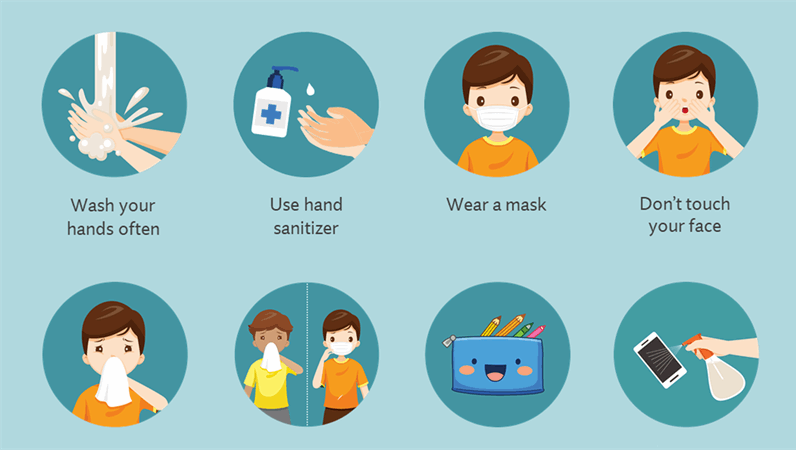
People infected with Covid, may have moderate to high fever. However, in some cases it might be asymptomatic and patients might not have any fever.
Coronavirus disease (COVID-19) is an infectious disease caused by the SARS-CoV-2 virus. Most people infected with the virus will experience mild to moderate respiratory illness and recover without requiring special treatment. However, some will become seriously ill and require medical attention. Older people and those with underlying medical conditions like cardiovascular disease, diabetes, chronic respiratory disease, or cancer are more likely to develop serious illness. Anyone can get sick with COVID-19 and become seriously ill or die at any age. The best way to prevent and slow down transmission is to be well informed about the disease and how the virus spreads. Protect yourself and others from infection by staying at least 1 metre apart from others, wearing a properly fitted mask, and washing your hands or using an alcohol-based rub frequently. Get vaccinated when it’s your turn and follow local guidance. The virus can spread from an infected person’s mouth or nose in small liquid particles when they cough, sneeze, speak, sing or breathe. These particles range from larger respiratory droplets to smaller aerosols. It is important to practice respiratory etiquette, for example by coughing into a flexed elbow, and to stay home and self-isolate until you recover if you feel unwell.

People infected with Covid, may have moderate to high fever. However, in some cases it might be asymptomatic and patients might not have any fever.
Covid affected patients may have cough and a runny nose which is also a very common symptom of "Common Cold"

This is the most common symptom of Covid. Almost 90% of symptomatic patients have this symptom. Hence, this is a case which must be seriously considered by the patient.
| Symptoms | Recommendations |
|---|---|
| Fever | If the temperature goes above 100°F, take a paracetamol of power as prescribed by physician. There is no need of panicking at any time, but symptoms like breathlessness should be closely monitored along with the oxygen saturation levels. |
| Cough | For coughs, there is probably not much to do. Paitents may have cough syrups as prescribed by the physician. Also have hot water at all times. Gargling is also a very useful method to treat cough-related problems. |
| Breathlessness | As said above, it is important to closely monitor oxygen saturation levels when a patients experiences breathlessness. When the level falls below 94%, the patient must think of being admitting himself/herself to a hospital where he/she can get external oxygen supply. If the level further falls below 90%, external oxygen supply is a must. |


Preventive measures to reduce the chances of infection include getting vaccinated, staying at home, wearing a mask in public, avoiding crowded places, keeping distance from others, ventilating indoor spaces, managing potential exposure durations, washing hands with soap and water often and for at least twenty seconds, practising good respiratory hygiene, and avoiding touching the eyes, nose, or mouth with unwashed hands. Those diagnosed with COVID-19 or who believe they may be infected are advised by the CDC to stay home except to get medical care, call ahead before visiting a healthcare provider, wear a face mask before entering the healthcare provider's office and when in any room or vehicle with another person, cover coughs and sneezes with a tissue, regularly wash hands with soap and water and avoid sharing personal household items.